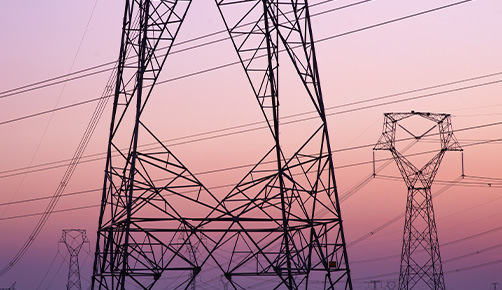
Tom Soderstrom
IT Chief Technology & Innovation Officer
NASA Jet Propulsion Laboratory

June 2020
NASA Jet Propulsion Laboratory has been hard at work preparing to launch a spacecraft to Mars in July. They’ve spent countless hours planning for any scenario that may arise as this is a deadline they can’t afford to miss. Given the way the planets align, it would be another two years before another launch could occur. Of course, NASA is well prepared to deal with the challenges of space exploration. But what happens when a pandemic hits back on Earth? With the current COVID-19 crisis, it’s not just the mission at stake, but the safety of the whole world. Not surprisingly, NASA JPL has a plan.
Evanta sat down with Tom Soderstrom, IT Chief Technology & Innovation Officer at NASA Jet Propulsion Laboratory to learn more about their response to COVID-19.
What was your organization’s immediate response to the current pandemic? How are you managing a work-from- home environment?
At JPL we normally have 6,000 employees going into work on any given day — now we only have 300 of the most essential people going in. A lot of people didn’t know that they could work from home until they had to. We’ve figured out how to do a lot of our work from home that we didn’t initially think we could. And we’ve accelerated some work in the near term, such as mandatory trainings. Those we can easily do from home.
We’re also a lot more focused. The extraneous things are falling off, and we are focusing on only the most important initiatives.
What are you most proud of in terms of your organization’s response to this pandemic?
I am most proud of the mobilization efforts led by our CIO, Randi Levin, in getting everyone setup to work remotely and to work within this new reality of COVID-19. Crisis helps create focus and spurs creativity. We have a lot of creative talent that is being applied to something that matters in the near term.
We are also going from a push to a pull in terms of data. In the past, it’s been a bit of a push with: “Here’s the data, it’s really interesting.” Now, we will see much more of a pull from the business asking: “How can you help me with all this data, visualization, maps, etc.?” This is a healthy change with data driving our decisions at the business levels.
A lot of organizations are implementing virtual happy hours and the like to help their teams stay connected. Are you doing something similar at JPL?
Yes, we are doing the same. One thing I’ve noticed is it’s much easier to get an executive to come in for ten minutes for a virtual happy hour to say hi to the team, so we are rotating executives to join the innovation and data/ analytics team’s happy hours. It’s great! They come in with their cocktails and it cheers everyone up, which is really needed during these pandemic times!
Another thing we’re doing — and I really applaud Evanta for not cancelling events but doing them remotely — is moving meetings to virtual. We found that using video turned out to be a really big benefit in maintaining personal relationships. We can use data for the impersonal portions, and video on the personal parts to maintain those connections and make sure everyone keeps getting to know each other. This could even help socialization more than the “old normal,” where some people are in a conference room, and some people participate from remote, because now everyone is on equal footing and — as long as the video is enabled for everyone — you meet new people. A side benefit: people’s names are under their video image.
NASA JPL is doing some really interesting things to help with COVID-19 including producing respirators. How did that come about?
The majority of JPLers are technical, engineers, and scientists. We looked at ways we can help with the COVID-19 pandemic. There were many efforts, but let me describe the one I am an intimate part of.
My boss, Randi Levin, JPL’s CIO, called me up one night and asked if we could 3D print respirators. Great idea! The next morning, I spun up a small team of engineers and IT, and we got to work on gathering the equipment from JPL to our homes, building a test lab, developing and testing prototypes, and recruiting volunteer medical professionals to make recommendations on the designs.
We are working like a startup and using the normal startup passionate ethos and common tools. The urgent deadline to save lives is keeping us completely focused and motivated.
When we began the project, we saw that there would be a perilous lack of commercial respirators and filters. Therefore, we decided to not disrupt the medical supply chain, but instead to use inexpensive and available materials and 3D printers, so that people across the world could print their own respirators to avoid COVID-19 contamination. For example, we built HEPA filters from inexpensive vacuum bags.
I’m happy and proud that after less than five weeks, we just released JPL’s 3D printable respirator designs into Open Source at https://github.com/nasa-jpl/COVID-19-respirators.
We provide several options, with instructions, and describe the tradeoffs of comfort vs. filtration. The feedback so far has been tremendous. We hope everyone takes a look and provides feedback. Or even better, 3D print a respirator for yourself or someone else.
Open source is becoming more important than ever, because with everyone working from home, we can have a much larger community to participate. This is a benefit that will persist way beyond the current pandemic.
Any final thoughts or advice for other data leaders?
Most people across the world are experiencing this forced telework and isolation. The CDO role is more important than ever, as getting and analyzing the data quickly and accurately is now a matter of life and death for individuals as well as businesses. So, looking for a silver lining,with the renewed and critical focus on data, what are the opportunities that can spring from this experience?
Special thanks to Tom Soderstrom and NASA Jet Propulsion Laboratory.
by CDOs, for CDOs
Join the conversation with peers in your local CDO community.





